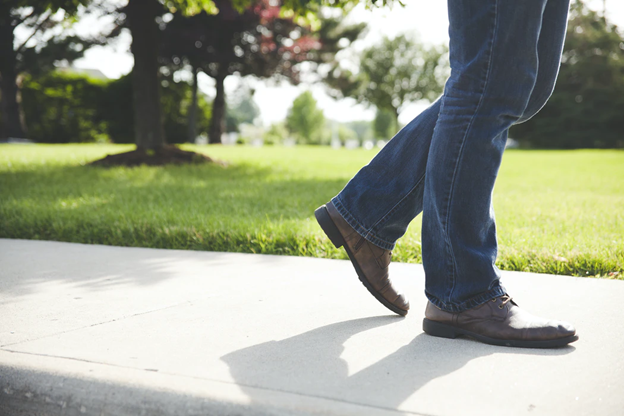Ask Our Experts: What Is Situational Awareness and Why Is It Important to Practice?


Being in tune with our environment in everyday life
can help us navigate, and even avoid some dangerous situations. Our corporate
Business Continuity and Disaster Recovery experts, Jim Vrooman and
Christopher Belden sat down with us to discuss situational awareness and how we
can apply it to our everyday lives.
What Is
Situational Awareness?

When asked to define situational awareness, Jim says, “It can be
defined simply as being aware of one’s surroundings and identifying potential
threats as well as dangerous situations. It is often referred to as a skill but
it’s really more of a mindset.” Training yourself to have
this type mindset can not only protect you from potential
safety hazards, but it can also stop us from making mistakes–like backing up
into someone else’s car in the parking
lot. Jim goes on to explain that situational awareness is not something
that can only be practiced by highly trained government agents or
specialized corporate security teams, but that it can be exercised by anyone
with the will and the discipline to do so.
What Are the
Benefits of Practicing Situational Awareness?

One of the major benefits of incorporating situational awareness is
the ability to prevent yourself from
making major safety
errors–no matter where you are. We can often find ourselves in
overwhelming environments, or so stuck in our own thoughts that we fail to
notice things that can pose a threat to our
health and safety. Practicing situational awareness can help us
avoid all of that. The level of awareness that you are operating on will
determine the things you notice and the things you
don’t.
What Are the
Levels of Awareness?

You might be surprised to learn that there are five distinct levels of
awareness that we as humans typically operate on. One of the insights that Jim
and Chris share as an effective way of explaining the differences between those
levels is to compare each level to the different degrees of attention we practice
while
driving.
Jim explains the five levels of awareness below:
1. Tuned Out
“The first level is where you are “tuned out”. For example, if you’ve
ever been driving on a route that you’ve driven multiple times, and you know it
like the back of
your hand, and suddenly you’re at your destination with no memory of how you
actually got there, you were operating on level one.”
2. Relaxed
Awareness
Level two is more like defensive driving. You are aware and watching
other cars on the road while looking ahead for potential hazards. “For example,
if you are approaching an intersection and another
driver looks like he may not stop, you tap your brakes to slow your car in
case he does not. In level two, you are relaxed and enjoying
your drive, but you are still watching for road hazards, maintaining a safe
following distance and keeping an eye on the behavior of the drivers around
you.” Chris explained.
3. Focused
Awareness
Focused Awareness can be compared to the mindset that you are in when
driving in hazardous road conditions, such as heavy
rain, snow or icy
roads. “The level of concentration required for this type of driving makes it
extremely tiring and
stressful. There is no time for cell
phones or distractions of any kind. A drive that you normally would not
think twice about will totally exhaust you under these conditions because it
demands prolonged and total concentration,” Jim explained.
4. High Alert
Level four, otherwise known as “high alert,” is one that typically
induces an adrenaline rush. “This is what happens when that car you are
watching at the intersection ahead doesn’t stop at the stop
sign and pulls out right in front of you. Although this level of awareness
can be scary, when you are on high alert you are still able to function”
5. Comatose
The last level of awareness is known as comatose. Jim explains
that this is the level at which you are not able to respond to the
circumstances around you. “It is this panic-induced paralysis that concerns us
most in relation to situational awareness. The comatose level is where you go
into shock, your brain
ceases to process information and you simply cannot react to the reality of the
situation.” Jim also shares that victims of crime frequently report
experiencing this sensation and being unable to act during an unfolding crime.
How Do I Find the
Right Level of Awareness?
It is critical for our minds and body to have periods of rest. It’s
perfectly okay to settle into a “tuned-out” state of awareness when
resting, reading a book, or watching a movie. However, it is important that
we don’t allow ourselves to become stuck in the mode of “tuned-out” awareness,
especially when we are in potentially
dangerous environments. You wouldn’t want to be tuned-out while walking home at
night or while driving. “We’ve found that it can be difficult to jump from one
level of awareness to another very quickly, this can cause you to freeze
up. Just like shifting your car directly from first gear
into fifth, where it will then shudder and stall. Many times, when people are forced to make
this mental jump and they panic, they go into shock, and will freeze–unable to
take action at all,” Jim shares.
When asked what level of awareness is best suited for everyday
situations, Jim says,
“The basic level of situational awareness that should be practiced in general
spaces is relaxed awareness. This state of mind can often be maintained
indefinitely without all the stress and
fatigue associated with focused awareness or high alert. Relaxed awareness is
not typically tiring and allows you to enjoy life while rewarding you with an
effective level of personal security.” However, Jim also points out that once you
start to dial in on a potential hazard, you will want to level up your
awareness. For example, if you are walking down the street and notice
others who appear to be lurking, you would want to change your course
while also staying somewhat inconspicuous.
How Do I Practice
Situational Awareness?

Honing in on the ability to become fully aware of your surroundings
can allow you to react effectively in potentially dangerous situations. Here
are a few ways in which you can start to develop this mindset:
1. Identify Your
Surroundings
When you enter a new environment, take a few moments to identify every
object, person, and sensory
element in your immediate vicinity. Looking at your surroundings critically and
acknowledging them is a crucial step in developing a mindful attitude. For
example, when you enter a building, make a
mental note of the exits, or the number of people in the room. “One trick that
many law enforcement officers are taught is to take a look at the people around
them and attempt to figure out their stories, in other words, what they do for
a living, their mood, what they are
focused on and what it appears they are preparing to do that day, based merely
on observation.” Jim shares.
2. Practice
Prediction
“Outcome prediction is something that takes practice at first” says
Chris, “Mainly because it often can involve predicting the actions of others.”
While you may not be able to tell exactly what another person is going to do in
any given situation, you may be able to take educated guesses at a few
likely scenarios and mentally prepare for those. For example, if you are
driving in a heavily wooded area or in the countryside, it’s safe to say that
there’s a good chance that deer and other wildlife may run out into
the road in front of you, so you will want to be on the lookout.
3. Avoid Focus
Locks in Periods of Transition
You will want to avoid things that lock your focus during times of
transition. For example, texting or reviewing email on your devices while doing
things like walking or driving
is something you should avoid at all costs.
4. Pay Attention to
Time
Understanding and tracking the passage of time is another important
component of situational awareness. Keeping track of the time can help you
recognize behaviors that may have otherwise seemed normal to you. For example,
keeping track of how long it has been since you last saw the friends or family
you were with when out and about or how long it’s been since your
child left for a public restroom are situations in which you may want to
keep track of how much
time has passed.
5. Trust Your Intuition
Trusting your intuition is an important aspect of situational
awareness. If you find yourself feeling anxious or worried, it’s best to trust
that feeling and change your course.
Studies have shown that
your brain filters out a large percentage of the information that it takes to
keep you from becoming overwhelmed. This means that even though your brain is
processing the entirety of the situation, you might not be consciously aware of
the
signs that are making you anxious. It’s best to trust your intuition.
We know that the
safety of yourself and your family is of the utmost importance. To be aware
in the most complex of environments, apply this awareness mindset to any
situation you may find yourself in. For more information on how to keep you and
your family safe
this summer, check out the link below!



